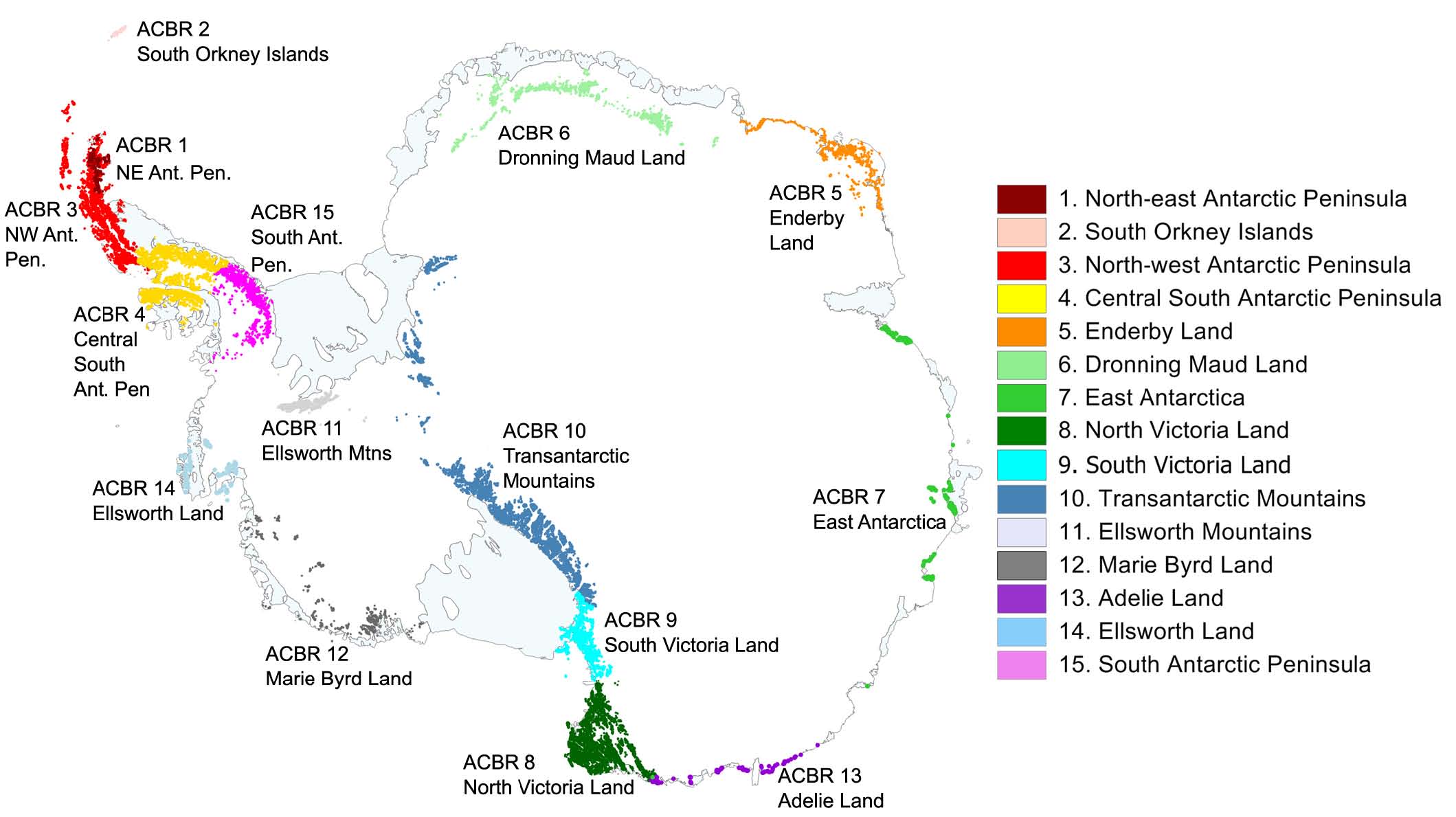Most people think of Antarctica as completely covered in ice. Ice-free areas cover only 0.4 % of the total continental area and until relatively recently it was thought that most were barren and largely devoid of life. But recent research has shown that this is not the case, with some of these areas supporting a diverse range of life, from microbes that inhabit the soils, to hardy invertebrates and mosses and lichens that can survive some of the most extreme conditions on the face of the planet.

In recognition of the need to further understand the distribution of Antarctic terrestrial biodiversity, in a recent paper in Diversity and Distributions, Dr Aleks Terauds, a Research Associate of the C·I·B, and colleagues collated all available information on terrestrial Antarctic biodiversity, and used different spatial frameworks to map the distribution of life. The work was initially coordinated by the Scientific Committee on Antarctic Research (SCAR) by Prof. Steven Chown and Dr Terauds, and involved a number of international collaborators. By looking for areas that were similar or different to each other, the authors used multivariate statistical techniques to combine the results from the different spatial frameworks, and identify 15 biologically distinct regions, or Antarctic Conservation Biogeographic Regions.
The scale of the biodiversity data used differentiates this study from previous biogeographical analyses in the region. Through the SCAR Antarctic Biodiversity Database, the authors had access to over 38 000 records, which represented more than 1800 different taxa. Earlier studies typically described broad bioregions, with the Antarctic Peninsula usually identified as biologically distinct from the rest of Antarctica. Some more recent work suggested that the biogeography was more complex, but the Antarctic Conservation Biogeographic Regions identified in this study are the clearest evidence to date that areas within Antarctica can be differentiated on the basis of their biodiversity.
This research will likely change the way people think about the conservation of terrestrial Antarctica. One of the key findings of the study was that these distinct bioregions are not fully represented in the current protected area network of Antarctica. Furthermore, the Antarctica Conservation Biogeographic Regions represent an important basis for managing biosecurity, particularly in regard to species being transferred from one biogeographic region to another.
Read the paper: Terauds et al. 2012. Conservation biogeography of the Antarctic. Diversity and Distributions. DOI: 10.1111/j.1472-4642.2012.00925.x
For further details contact Dr Aleks Terauds, e-mail aleks.terauds@gmail.com

